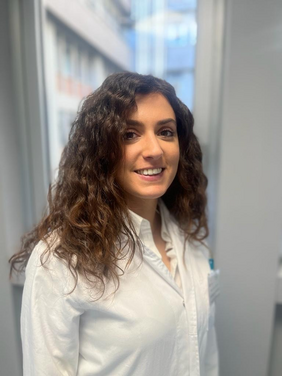Optimizing Photon Counting CT Enterography: Arghavan Sharifi, Thomas O’Donnell, Bari Dane Abdom Radiol (NY). 2025. doi:10.1007/s00261-025-04832-z Photon-counting CT (PCCT) is the latest innovation in computed tomography, offering a novel detector technology that captures spectral information by counting individual X-ray photons and measuring their energy (1-3). Compared to conventional energy-integrating detector CT, PCCT enables routine spectral imaging, superior spatial resolution, improved iodine contrast-to-noise ratio (CNR), and reduced radiation exposure (4). One of its most impactful clinical applications is in abdominal imaging, where these technical advances can enhance the detection of subtle bowel wall abnormalities, inflammatory changes, or gastrointestinal bleeding. CT enterography is widely used to evaluate small bowel pathologies such as Crohn’s disease, neoplasms, and obscure GI bleeding (5). With the introduction of photon-counting CT (PCCT) into routine clinical practice, virtual monoenergetic (VME) reconstructions are increasingly interpreted as the primary image series, as they enhance contrast-to-noise ratio (CNR), improve lesion conspicuity, reduce image noise at low keV, and minimize beam hardening artifacts at high keV. (6). However, the optimal VME energy level for bowel assessment, balancing attenuation, noise, and image contrast, had not been established. The aim of this study was to determine the best monoenergetic level for PCCT enterography using quantitative image quality metrics. This retrospective study included 50 adult patients (mean age 57 years, 64% female) who underwent PCCT enterography between May 1 and May 31, 2022. All scans were acquired using a dual-source PCCT system (NAEOTOM Alpha, Siemens Healthineers) with standard clinical enterography protocol. Spectral postprocessing enabled the retrospective generation of VME datasets from 40 to 120 keV in 10 keV increments. Two radiologists placed standardized regions of interest (ROIs) in the stomach, jejunum, ileum, and psoas muscles to measure attenuation (HU), image noise (standard deviation), signal-to-noise ratio (SNR), and CNR across all energy levels. The results showed that bowel wall attenuation and image noise for all bowel regions were highest at 40 keV and gradually decreased as keV increased. However, SNR remained stable between 40 and 70 keV across all bowel segments. Contrast-to-noise ratio (CNR) decreased with increasing keV. CNR was similar for all bowel at 40 keV and 50 keV (p =.06), for stomach from 40 to 70 keV (all p >.05), for jejunum from 40 to 50 keV (p =.21), and for ileum from 40 to 60 keV (all p >.05). Notably, CNR at 50 keV was statistically comparable to 40 keV but associated with lower image noise, making it a more optimal balance for clinical interpretation. At higher keV levels (70–120 keV), CNR dropped significantly, compromising contrast visualization. Based on these findings, the authors recommend using 50 keV VME reconstructions as the standard viewing series for bowel assessment in PCCT enterography. This keV level provides superior contrast resolution without the excessive noise seen at 40 keV. | The implications for clinical practice are substantial, particularly in settings such as Crohn’s disease, where subtle mucosal and submucosal changes must be detected accurately, often in patients undergoing repeated imaging. Additionally, the improved performance of PCCT in obese patients and the reduced radiation burden further underscore its value in gastrointestinal imaging. In conclusion, this study offers compelling evidence that 50 keV VME images should be systematically reconstructed and interpreted in PCCT enterography for optimal bowel wall evaluation. References 1. Leng S, Bruesewitz M, Tao S, Rajendran K, Halaweish AF, Campeau NG, Fletcher JG, McCollough CH. Photon-counting Detector CT: System Design and Clinical Applications of an Emerging Technology. Radiographics 2019;39(3):729-743. doi: 10.1148/rg.2019180115 2. Willemink MJ, Persson M, Pourmorteza A, Pelc NJ, Fleischmann D. Photon-counting CT: Technical Principles and Clinical Prospects. Radiology 2018;289(2):293-312. doi: 10.1148/radiol.2018172656 3. Flohr T, Petersilka M, Henning A, Ulzheimer S, Ferda J, Schmidt B. Photon-counting CT review. Phys Med 2020;79:126-136. doi: 10.1016/j.ejmp.2020.10.030 4. Pourmorteza A, Symons R, Henning A, Ulzheimer S, Bluemke DA. Dose Efficiency of Quarter-Millimeter Photon-Counting Computed Tomography: First-in-Human Results. Invest Radiol 2018;53(6):365-372. doi: 10.1097/RLI.0000000000000463 5. Bruining DH, Zimmermann EM, Loftus EV, Jr., Sandborn WJ, Sauer CG, Strong SA, Society of Abdominal Radiology Crohn's Disease-Focused P. Consensus Recommendations for Evaluation, Interpretation, and Utilization of Computed Tomography and Magnetic Resonance Enterography in Patients With Small Bowel Crohn's Disease. Gastroenterology 2018;154(4):1172-1194. doi: 10.1053/j.gastro.2017.11.274 6. Yang Y, Qin L, Lin H, Xu Z, Schmidt B, Leidecker C, Yang W, Wen N, Yan F. Consistency of Monoenergetic Attenuation Measurements for a Clinical Dual-Source Photon-Counting Detector CT System Across Scanning Paradigms: A Phantom Study. AJR Am J Roentgenol 2024;222(5):e2330631. doi: 10.2214/AJR.23.30631
She has a broad interest in diagnostic imaging, with a particular focus on gastrointestinal imaging and the role of contrast media in CT and MRI. During her residency, she completed a one-year research fellowship in the Abdominal Imaging Section of the Department of Radiology at Duke University, Durham, NC, USA. She has delivered scientific presentations at several international radiology conferences and contributed as a co-author to multiple peer-reviewed publications. Comments may be sent to |

